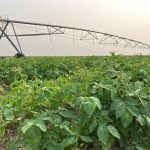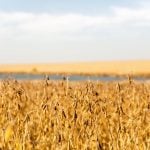The Western Climate Initiative, in its proposed design for a regional cap-and-trade program to cut greenhouse gases, will look seriously at including agricultural offsets — which in turn could allow farmers in several provinces to provide carbon credits to the program.
The WCI’s partner jurisdictions include the governments of British Columbia, Manitoba, Ontario and Quebec and of seven U.S. states. The group on Tuesday released its proposed cap-and-trade design.
Cap-and-trade models for greenhouse gas reduction involve setting a limit on emissions, then those firms that exceed their caps must buy allowances from companies or organizations that reduce their emissions below their limit.
“The WCI is now the largest climate collaborative in North America, representing approximately 20 per cent of the U.S. economy, 73 per cent of Canada’s economy, and 50 per cent of all greenhouse gas emissions in our country,” said B.C. Environment Minister Barry Penner in a release.
“All of the WCI partner economies will need clean energy technologies and verifiable carbon offsets. B.C. is well positioned to provide these solutions to our partners, attracting new investment and jobs to communities across the province in the process.”
Carbon offsets allow polluters to pay for credits for work that removes excess greenhouse gases from the atmosphere, in lieu of reducing the polluter’s own emissions. The WCI model proposes limiting the use of all offsets to no more than 49 per cent of the group’s total emission reductions from 2012 to 2020, to make sure the majority of emission cuts come from companies and facilities covered by the WCI.
Ag a “priority”
The WCI plan names agriculture, along with the forestry and waste management sectors, as “a priority for investigation and development” to take part in an offset system.
“Priority,” however, does not mean they would definitely be included in the WCI’s offset system. It means only that the WCI partner provinces and states “are interested in understanding if (such offsets) are suitable for the offset system.”
In farming’s case, offsets would come from the amount of carbon stored (or “sequestered”) in the soil through farm practices such as zero- or minimum tillage, or through manure management.
The WCI partners said in their plan that they will meet next year to “review, develop and approve, as appropriate” the protocols for allowable carbon offset projects under the WCI system.
However, WCI partners “do not intend to regulate or restrict the existing voluntary market in offsets, to restrict the sale of offsets from projects located within a WCI partner jurisdiction, or to place restrictions on ownership of offset projects located within WCI partner jurisdictions.”
“Today is a milestone for Ontario’s efforts leading the way for a
national cap-and-trade system. There is no question that we need to put a
price on carbon, and more needs to be done,” Ontario’s Environment Minister John
Gerretsen said of the WCI design, in a separate provincial release.
Ontario’s GHG reduction targets include cutting emissions by six per cent below 1990 levels by 2014, and 15 per cent by 2020.
“Never as effective”
But not everyone in the public policy arena admires carbon offsets, particularly in a cap-and-trade system. Canada’s National Round Table on the Environment and the Economy (NRTEE) in January panned offsets generally as “subsidy-type programs” that are “never as effective” as direct cuts in greenhouse gas emissions.
The NRTEE had described a cap-and-trade-plus-offsets system as “the least effective” of several policy packages it examined, because it “provides incentives to technology and behaviour that would likely have occurred in the absence of the offsets system.”
Often over 60 per cent of offset recipients are such so-called “free-riders” but it’s impossible to exclude them, the NRTEE said. As a way to cut emissions, offsets thus couldn’t hope to reach 100 per cent efficiency.








